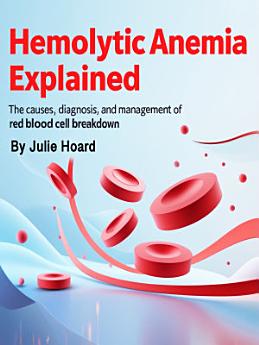Hemolytic Anemia Explained: The Causes, Diagnosis, and Management of Red Blood Cell Breakdown
About this ebook
To understand hemolytic anemia, it’s essential to first grasp the function of red blood cells. These cells play a vital role in transporting oxygen from the lungs to tissues and removing carbon dioxide from the body. They contain a protein called hemoglobin, which binds to oxygen and gives blood its red color. When red blood cells are destroyed prematurely, the body not only loses its oxygen-carrying capacity but also begins to accumulate the byproducts of hemolysis, such as bilirubin. This buildup can cause symptoms like jaundice, fatigue, dark-colored urine, and an enlarged spleen.
Hemolysis can occur either inside the blood vessels (intravascular) or outside them, mainly in the spleen or liver (extravascular). Depending on the cause, hemolytic anemia can be classified as either inherited or acquired. Inherited types are passed genetically and include conditions like sickle cell disease or hereditary spherocytosis. Acquired hemolytic anemia, on the other hand, develops later in life and may result from immune reactions, infections, medications, or mechanical damage from medical devices.






